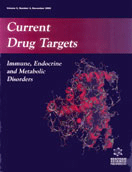Abstract
Interleukin-1α (IL-1α) plays an important role(s) in the regulation of immune and inflammatory responses. The testis is an immunologically privileged organ and the variety of effects exerted by IL-1α on this organ have yet to be explored in detail. The aim of the present review is to describe our current view of the paracrine role played by IL-1α in testicular physiology. Testicular IL-1α is expressed during development, primarily in Sertoli cells, appearing in rats for the first time 20 days after birth. This cytokine is microheterogeneous, consisting of three molecular species with molecular weights of 45, 24 and 17 KDa. The 17KDa form represents mature IL-1α, while the 24-KDa IL-1α has been shown by our research group to be an alternately spliced form of the 45-KDa pro-IL-1α. IL-1α was observed to stimulate the proliferation of immature Sertoli cells with higher efficacy than FSH. IL-1α was also found to exert mitogenic effects both on isolated peritubular cells and germ cells. Furthermore, isoforms of IL-1α were seen to stimulate basal testosterone production in immature Leydig cells, but not in the corresponding adult cells. This effect involved induction of the steroidogenic acute regulatory (StAR) protein and positively regulation by p38 MAPK. Recently, we have observed positive interactions between IL-1α and hormones of the GH / IGF-I system that lead to enhanced androgen production by the Leydig cell. In conclusion, our findings suggest that isoforms of IL-1α may serve as paracrine mediators, alone or in concert with other factors, that support proper testicular cell functioning and, thereby, reproduction and fertility.
Keywords: spermatogenesis, sertoli cells, leydig cells
 20
20


















